Imsouane Surf Season: When Waves Are Best
Understanding the Imsouane surf season represents the key to experiencing Morocco’s most legendary waves at their absolute peak performance. This comprehensive guide reveals the intricate seasonal patterns that govern wave quality, weather conditions, and optimal surfing experiences throughout the year at this world-renowned Moroccan surf destination.
The Imsouane surf season follows distinct patterns driven by North Atlantic storm systems, seasonal weather variations, and complex oceanographic factors that combine to create the consistent, high-quality waves that have earned this small fishing village international recognition among the surfing elite. Timing your visit according to these seasonal rhythms can mean the difference between good surf sessions and truly epic experiences that create lifelong memories.
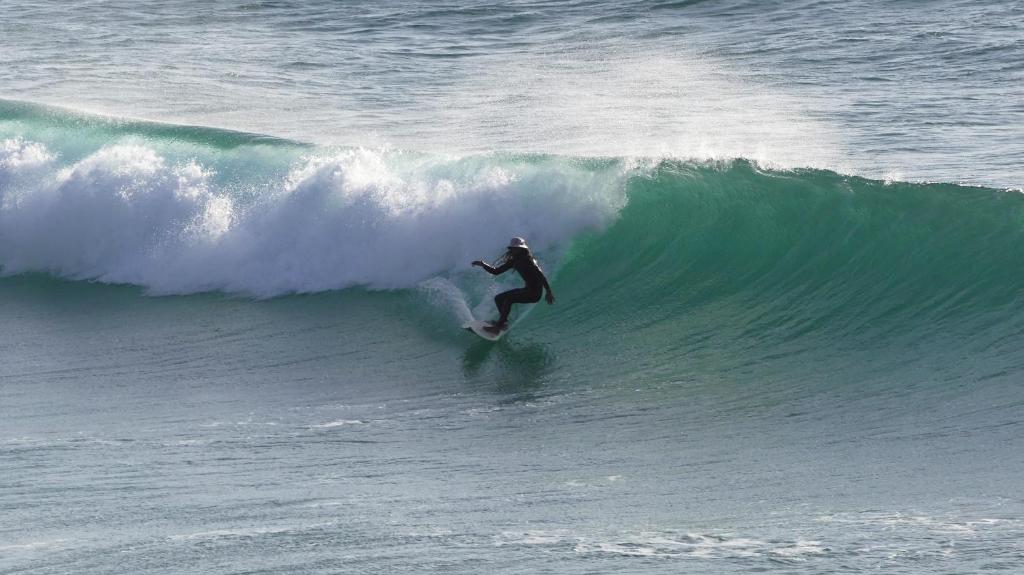
Imsouane Surf Season: When Waves Are Best | Complete 2025 Guide
When surfers research the Imsouane surf season, they’re seeking to understand how seasonal variations affect wave consistency, size, and quality at both The Bay and Cathedral Point breaks. Each season brings distinct characteristics that cater to different surfing preferences, skill levels, and trip objectives, making seasonal timing a crucial factor in surf trip planning.
The magic of the Imsouane surf season lies in its year-round surfability, with each season offering unique advantages and experiences. From the powerful, consistent swells of winter to the gentle, uncrowded waves of summer, understanding these seasonal nuances helps surfers choose optimal timing for their specific goals and surfing abilities.
Peak Winter Season: December Through March
The peak Imsouane surf season occurs during the winter months of December through March, when North Atlantic storm systems generate the most consistent and powerful groundswells that create the legendary wave conditions for which this Moroccan destination has become famous. During this prime period, surfers experience the full potential of both The Bay and Cathedral Point breaks operating at their maximum performance levels.
Winter storm patterns in the North Atlantic create low-pressure systems that generate long-period swells with exceptional power and organization. These swells travel thousands of miles across the Atlantic Ocean, arriving at Imsouane’s coastline with remarkable consistency and quality that produces the epic surf sessions that define the peak Imsouane surf season experience.
Wave heights during peak season typically range from 4-12 feet Hawaiian scale, with occasional larger swells exceeding these ranges during particularly active storm periods. The consistent nature of winter swell patterns means that surfers can reasonably expect good to excellent waves throughout most of their stay during the peak Imsouane surf season months.
Water temperatures during winter range from approximately 16-18°C (61-64°F), requiring 3/2mm full wetsuits for comfortable surf sessions. While cooler than summer months, these temperatures remain very manageable compared to many other world-class surf destinations, contributing to the appeal of the winter Imsouane surf season.
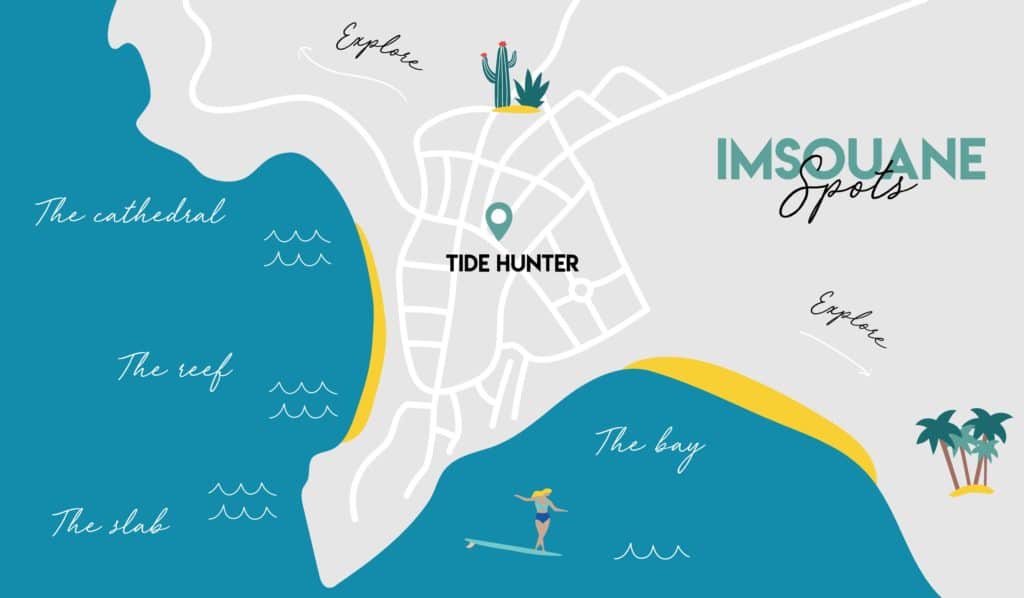
Imsouane Surf Season: When Waves Are Best | Complete 2025 Guide
Wind patterns during the peak Imsouane surf season generally favor offshore conditions during early morning hours, with thermal onshore winds typically developing during afternoon periods. This daily pattern allows experienced surfers to time their sessions for optimal conditions while providing predictable windows for planning surf activities.
The Bay reaches its full potential during peak season, with longer, more powerful waves that can exceed 800 meters in length under optimal conditions. The additional swell power creates steeper takeoffs and more dynamic wave sections while maintaining the break’s characteristic user-friendly nature that accommodates various skill levels.
Cathedral Point becomes most active during the peak Imsouane surf season, requiring the larger swells generated by winter storms to break consistently. When conditions align properly, Cathedral produces some of the finest waves in all of Morocco, with powerful, hollow sections that challenge even the most experienced surfers.
Crowd levels reach their peak during the winter Imsouane surf season, as surfers from around the world time their visits to coincide with optimal wave conditions. Popular surf spots can become quite busy, particularly during European holiday periods, making early morning sessions and weekday surfing preferable for those seeking less crowded experiences.
Spring Transition: April and May
The spring months of April and May represent an excellent compromise period within the Imsouane surf season, offering many of the benefits of peak winter conditions while featuring smaller crowds, improving weather, and more manageable wave sizes that appeal to intermediate surfers and those seeking a balance between challenge and accessibility.
Swell consistency remains high during the spring Imsouane surf season as North Atlantic storm patterns continue generating regular groundswells, though with slightly less intensity than peak winter months. This reduction in raw power often creates more user-friendly conditions while maintaining the quality and length that make Imsouane’s waves special.
Wave heights during spring typically range from 3-8 feet Hawaiian scale, providing excellent surfing conditions without the intimidating power that can characterize peak winter swells. These moderate sizes prove ideal for intermediate surfers looking to progress their skills and for advanced surfers seeking long, enjoyable sessions without extreme challenges.
Water temperatures begin warming during the spring Imsouane surf season, reaching approximately 18-20°C (64-68°F), which allows many surfers to transition from full wetsuits to spring suits or even boardshorts during warmer days. This temperature improvement enhances comfort and extends possible session lengths.
Weather conditions improve significantly during spring, with increased sunshine hours, reduced rainfall, and generally more stable atmospheric conditions. These improvements create more pleasant overall experiences and better opportunities for outdoor activities beyond surfing during the spring Imsouane surf season.
Wind patterns remain generally favorable during spring, though thermal effects can become more pronounced as temperatures increase. Morning offshore winds typically provide the cleanest conditions, while afternoon onshore winds may affect wave quality but rarely make conditions completely unsurfable.
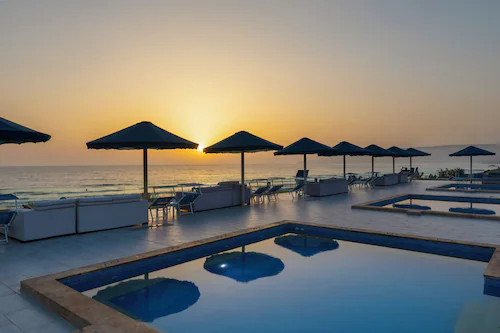
Imsouane Surf Season: When Waves Are Best | Complete 2025 Guide
The Bay continues delivering exceptional waves during the spring Imsouane surf season, with slightly smaller but often cleaner conditions that provide optimal learning and progression opportunities. The reduced power makes this period excellent for surfers transitioning from beginner to intermediate levels.
Cathedral Point becomes more selective during spring, requiring specific swell and tide combinations to break properly. When working, it often provides cleaner, more manageable conditions than during peak winter months while still maintaining its challenging, high-performance character.
Accommodation availability improves during spring as peak season crowds diminish, often resulting in better rates and more flexible booking options. This improved availability makes the spring Imsouane surf season attractive for spontaneous trip planning and extended stays.
Summer Season: June Through September
The summer months within the Imsouane surf season offer a completely different but equally valuable surfing experience, characterized by smaller, gentler waves, warm weather, and uncrowded lineups that create ideal conditions for beginners, longboard enthusiasts, and surfers seeking relaxed, stress-free surf experiences.
Swell patterns change dramatically during the summer Imsouane surf season as North Atlantic storm activity diminishes and moves further north. Local wind swells and occasional long-period groundswells from distant Southern Hemisphere storms provide more limited but still surfable wave energy throughout the summer months.
Wave heights during summer typically range from 1-4 feet Hawaiian scale, with occasional larger pulses during active periods. While these sizes might disappoint surfers seeking powerful, challenging waves, they provide perfect conditions for learning fundamental skills and enjoying relaxed longboard sessions.
Water temperatures reach their peak during the summer Imsouane surf season, rising to approximately 20-22°C (68-72°F), which allows comfortable surfing in boardshorts or thin spring suits. These warm temperatures enable extended sessions and make water activities more enjoyable for all participants.
Weather conditions become nearly perfect during summer, with minimal rainfall, abundant sunshine, and comfortable air temperatures. These ideal conditions create perfect environments for surf camps, family surf vacations, and extended outdoor adventures during the summer Imsouane surf season.
The Bay transforms during summer, providing gentle, forgiving waves that break slowly over the sandy bottom. These conditions prove ideal for surf instruction, longboard riding, and practicing new techniques without the pressure and power associated with larger swells.
Cathedral Point rarely breaks during the summer Imsouane surf season due to insufficient swell energy, making The Bay the primary focus for summer surf activities. This concentration creates a more relaxed, community-focused atmosphere around the main break.
Crowd demographics shift during summer, with more families, surf schools, and beginner-focused groups replacing the advanced surfers who dominate during peak season. This change creates a more relaxed, educational atmosphere that benefits newer surfers and those seeking less competitive lineups.
Autumn Revival: October and November
The autumn months of October and November mark the beginning of the renewed Imsouane surf season as North Atlantic storm patterns reactivate and begin generating the consistent swells that will build toward peak winter conditions. This transitional period offers excellent surfing opportunities with increasing swell consistency and pleasant weather conditions.
Swell generation increases progressively during autumn as storm tracks shift southward and begin affecting Moroccan coastlines more directly. Early autumn often features inconsistent but occasionally excellent waves, while late autumn provides increasingly reliable swell patterns that preview the coming peak season.
Wave heights during the autumn Imsouane surf season typically range from 2-6 feet Hawaiian scale, with occasional larger pulses as storm activity intensifies. These moderate sizes provide excellent surfing for all skill levels while offering glimpses of the power that will characterize the approaching winter months.
Water temperatures remain comfortable during autumn, gradually cooling from summer highs to approximately 18-20°C (64-68°F). Most surfers find spring suits adequate during early autumn, transitioning to full wetsuits as temperatures decline toward winter levels.
Weather conditions during autumn feature the year’s most pleasant combination of factors, with warm but not hot temperatures, minimal rainfall, and generally stable atmospheric conditions. This period often provides the best overall weather experience within the entire Imsouane surf season.
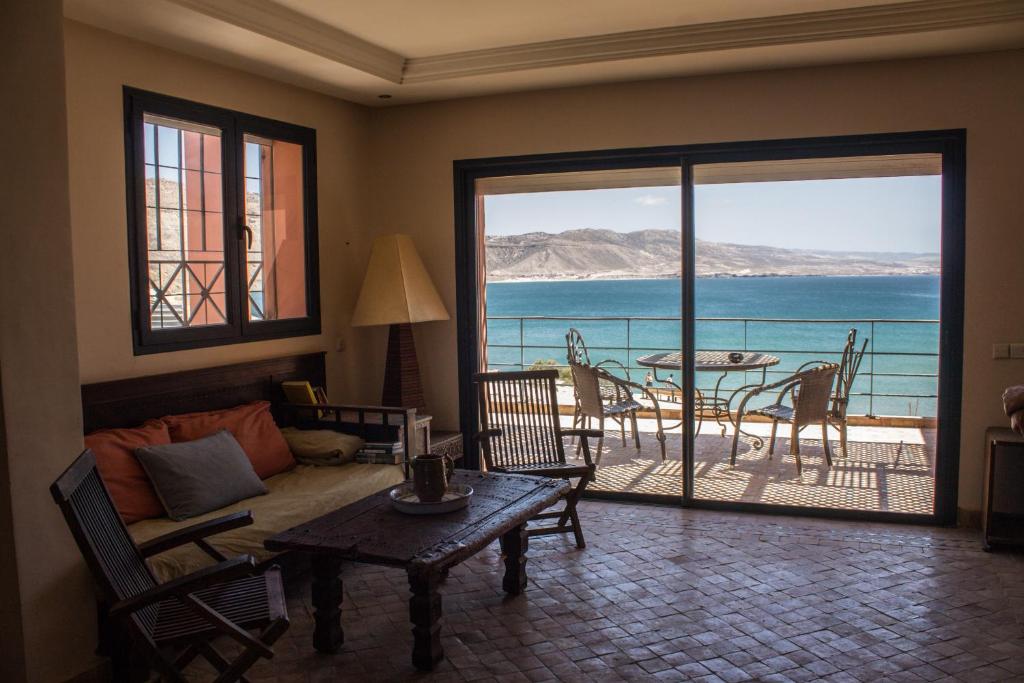
Imsouane Surf Season: When Waves Are Best | Complete 2025 Guide
The Bay begins showing increased power and consistency during autumn, with longer rides and more dynamic wave sections developing as swell energy increases. This period provides excellent opportunities for surfers to adjust to more powerful conditions before peak season arrives.
Cathedral Point starts breaking more regularly during late autumn as swell sizes increase, though it typically requires specific conditions to work properly. When functioning, it offers excellent preparation for the more consistent Cathedral sessions that characterize peak winter months.
Accommodation rates often provide excellent value during autumn as summer tourist seasons end but peak surf season hasn’t yet begun. This timing can offer significant savings while still providing good wave conditions and pleasant weather.
Monthly Breakdown and Specific Timing
Understanding month-by-month variations within the Imsouane surf season helps surfers choose optimal timing based on their specific preferences, skill levels, and trip objectives. Each month brings distinct characteristics that can significantly impact the overall surf experience.
December typically marks the beginning of consistent swell arrival, with wave heights building throughout the month as North Atlantic storm patterns establish. Early December often provides transitional conditions, while late December delivers more reliable, powerful swells that preview peak season performance.
January represents the heart of the peak Imsouane surf season, with the most consistent and powerful waves of the year. Storm systems reach maximum intensity and frequency, creating exceptional wave conditions that attract surfers from around the world seeking premium Atlantic surf experiences.
February continues the peak season excellence with sustained swell consistency and quality. This month often provides the most reliable wave conditions, making it ideal for planned surf trips and surf camps seeking guaranteed good waves for their programs.
March typically features the year’s largest swells as winter storm patterns reach maximum intensity before beginning their seasonal decline. Advanced surfers often prefer March for its combination of power, consistency, and improving weather conditions.
April marks the beginning of seasonal transition, with decreasing swell power but improving weather and reduced crowds. This month provides excellent intermediate conditions and represents optimal timing for surfers seeking good waves without peak season intensity.
May continues the spring transition with pleasant weather, moderate waves, and manageable crowds. This month often provides ideal conditions for surf progression and extended sessions in comfortable conditions.
June through August offer consistent small wave conditions ideal for beginners and longboard enthusiasts. While wave power decreases significantly, the combination of warm weather, uncrowded lineups, and gentle waves creates perfect learning environments.
September begins the autumn build-up with gradually increasing swell consistency and the year’s most pleasant weather conditions. This month often provides excellent value and good wave opportunities as seasonal patterns begin shifting toward winter.
October and November feature increasing wave consistency and excellent weather, making these months attractive for surfers seeking good conditions without peak season crowds and prices.
Weather Patterns and Climate Considerations
Climate and weather patterns play crucial roles in defining the optimal Imsouane surf season experience, affecting not only wave quality but also overall comfort, safety, and enjoyment during surf trips to this Moroccan destination.
Seasonal temperature variations remain moderate due to Imsouane’s coastal location and Mediterranean climate influences. Air temperatures typically range from 15-25°C (59-77°F) during winter months and 20-30°C (68-86°F) during summer, creating comfortable conditions for outdoor activities throughout the year.
Rainfall patterns concentrate primarily during winter months, with December through March receiving the majority of annual precipitation. However, total rainfall amounts remain relatively low, and extended periods of rain are uncommon even during the wettest months of the Imsouane surf season.
Wind patterns follow predictable daily cycles throughout most of the Imsouane surf season, with offshore winds typically occurring during early morning hours before thermal onshore winds develop during afternoon periods. Understanding these patterns helps surfers time their sessions for optimal conditions.
Humidity levels remain comfortable throughout the year due to constant ocean breezes that moderate atmospheric moisture. Even during summer months, the coastal location prevents the oppressive humidity that characterizes many tropical surf destinations.
Sunlight hours vary seasonally, with shorter days during winter months and extended daylight during summer months. Peak winter features approximately 9-10 hours of daylight, while summer provides up to 14 hours, affecting session timing and outdoor activity planning.
Crowd Patterns and Tourism Seasons
Understanding crowd patterns throughout the Imsouane surf season helps surfers plan visits that align with their preferences for lineup density, accommodation availability, and overall destination atmosphere.
Peak season crowds concentrate during December through March, with European winter holidays creating particularly busy periods. Christmas and New Year periods, along with February school holidays, typically feature the highest visitor numbers and most crowded surf lineups.
Surf school activity peaks during optimal learning months, with summer featuring the highest concentration of beginner programs and autumn through spring hosting more advanced coaching camps. These patterns affect lineup dynamics and wave sharing considerations.
Professional surfer and surf photographer visits often coincide with peak swell seasons, particularly during January and February when wave conditions reach their annual peak. These visits can create additional crowd pressure at premier surf spots.
Local event scheduling sometimes coincides with optimal surf seasons, with surf competitions and festivals typically planned during periods of reliable wave conditions. These events can significantly impact local crowds and accommodation availability.
Weekend versus weekday variations become more pronounced during peak season, with weekends featuring higher crowd levels due to regional visitors from cities like Marrakech and Casablanca joining international surf tourists.
Equipment and Preparation for Seasonal Variations
Proper equipment selection and preparation vary significantly throughout the Imsouane surf season, with different months requiring different approaches to board choice, wetsuit needs, and safety considerations.
Wetsuit requirements change seasonally, with winter months requiring 3/2mm full suits for comfort during extended sessions. Spring and autumn periods often allow for spring suit options, while summer months enable boardshort surfing for most individuals.
Board selection considerations vary with seasonal wave characteristics, with winter months favoring step-up boards or guns for larger swells, while summer conditions work well with longboards and performance boards designed for smaller waves.
Safety equipment needs increase during peak season when waves reach maximum size and power. Stronger leashes, impact vests for reef breaks, and comprehensive first aid supplies become more important during high-energy swell periods.
Sun protection requirements peak during summer months but remain important year-round due to strong UV reflection from water and sand. High-SPF sunscreen, protective clothing, and adequate hydration become crucial for extended outdoor exposure.
Photography and documentation equipment must account for seasonal weather variations, with waterproof housing and protection becoming more important during winter months when weather conditions can be more challenging.
Conclusion: Timing Your Perfect Imsouane Surf Adventure
Understanding the complete Imsouane surf season cycle empowers surfers to choose optimal timing that aligns perfectly with their skill levels, preferences, and trip objectives. From the powerful consistency of peak winter months to the gentle learning conditions of summer, each season within the Imsouane surf season offers unique advantages and memorable experiences.
The key to maximizing your Imsouane surf season experience lies in matching seasonal characteristics with your specific goals, whether seeking challenging waves for skill development, perfect learning conditions for progression, or simply consistent surf in a beautiful setting. This comprehensive understanding ensures that your visit coincides with conditions that will create the most satisfying and memorable surf experiences.
The year-round surfability that defines the Imsouane surf season means that there’s never a truly bad time to visit, only different experiences that cater to different preferences and objectives. Plan your visit according to this seasonal guide and discover why surfers return year after year to experience the magic of Morocco’s most legendary waves.
Your perfect Imsouane surf season adventure awaits, timed to perfection for the waves, weather, and experience you seek most.

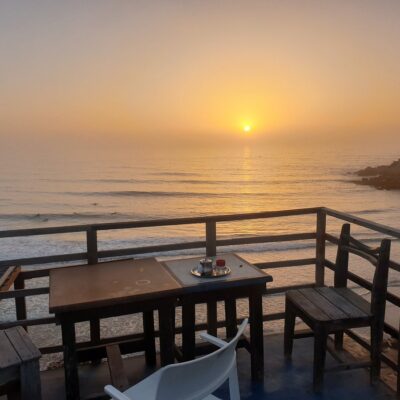
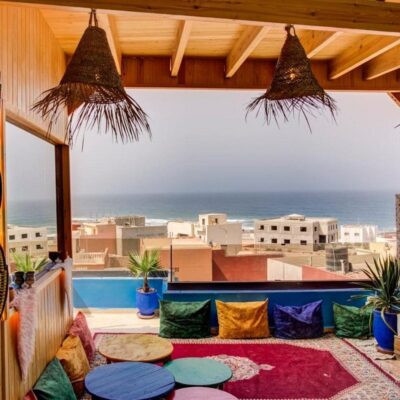
Comments